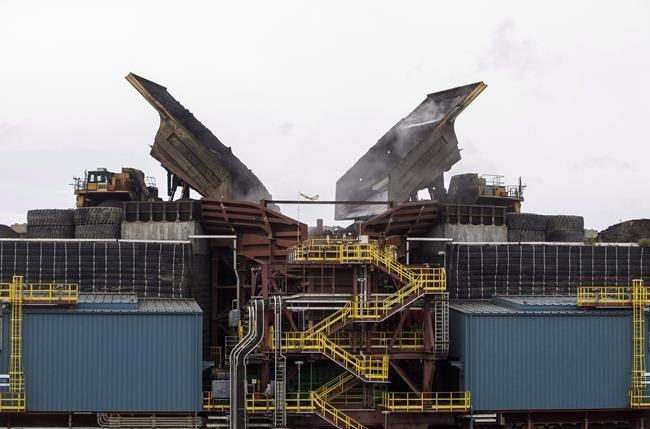Alberta's energy regulator ruled Thursday that it won't reconsider approvals for Suncor to expand an oilsands mine into a wetland once considered for environmental protection.
The decision opens the door for expansion of the company's Fort Hills mine that has been before the regulators for more than two decades. It unlocks an estimated billion barrels of bitumen.
"This is part of Fort Hills moving forward," said Suncor spokesman Leithan Slade.
But scientists say it's also likely to doom a unique patterned fen — a peat-producing wetland featuring long strings of trees and shrubs separated by narrow pools that is host to 20 rare or endangered plant species and more than 200 species of migratory birds, including endangered whooping cranes.
"We're disappointed and frustrated," said Phillip Meintzer of the Alberta Wilderness Association, which had asked the regulator to reconsider the approval it granted last September in light of new scientific information it presented.
The McClelland Lake complex, about 90 kilometres north of Fort McMurray, Alta., was excluded from development in 1996 because of its environmental value. That exclusion was lifted in 2002 for the part of the wetland within an oilsands lease then owned by True North Energy.
The regulator approved True North's application to develop the site, despite warnings from an environmental impact assessment that mine dewatering and other disturbances would likely kill the fen's distinctive peat-forming mosses.
The approval came with conditions that included developing a plan to protect the unmined portion of the wetland.
That plan, finally submitted in 2021, is what the regulator reconsidered, although the project now belongs to Fort Hills Energy, majority-owned by Suncor Energy Inc. Legislation says the regulator may confirm, vary, suspend or revoke its decisions, with or without a hearing, if it's presented with compelling new evidence.
To protect the unmined wetland while the rest is drained and excavated, Suncor proposes a complicated set of wells and pumps to control and monitor water levels and chemistry. Its centrepiece is a wall, nearly 14 kilometres long and between 20 and 70 metres deep.
The company has acknowledged plans for the wall are incomplete. But Slade said Suncor is committed to protecting the remaining wetland.
"The operational plan is expected to evolve as technology will advance," he said. "We are committed to maintaining the ecological diversity and function of the unmined portion."
In its submission to the regulator, the association quoted several wetland scientists from across North America who doubted the wall will work.
Those experts pointed out the technology is untested and will have to work perfectly for decades. They said such structures are known to leak and said the mined half of the wetland is likely to significantly change that of the unmined portion.
That wasn't enough for the regulator.
"We find that the (association) has not presented any new information which demonstrates exceptional and compelling reasons for the (regulator) to reconsider its decision to issue the approval," the ruling said.
It said the original approval contained adequate safeguards, including monitoring, modelling and performance reports.
"The approval does not preclude changes to the operational plan, nor does it preclude the (regulator) from making modifications to the conditions regulating the project."
The regulator also criticized the association for withdrawing from a committee set up by Suncor to monitor the mine's environmental performance.
Meintzer said the association couldn't be part of a process in which it had little faith.
"If we're part of the team crafting the plan, we're essentially saying yes to destroying the half we're allowing to be mined. That's something we've always been against."
McClelland Lake is underlain by peat between two and eight metres deep, accumulated over 11,000 years. That's storing between eight million and 35 million tonnes of carbon dioxide.
The entire amount of carbon dioxide sequestered in Alberta's carbon capture and storage programs since 2015 is 10.5 million tonnes.
The association had asked for the entire area to be protected, noting it represents a tiny fraction of Alberta's 4,750 square kilometres of minable oilsands.
This report by The Canadian Press was first published Nov. 23, 2023.
Bob Weber, The Canadian Press
Note to readers: This is a corrected story. A previous version misquoted Suncor spokesman Leithan Slade.



